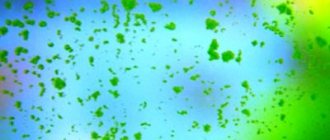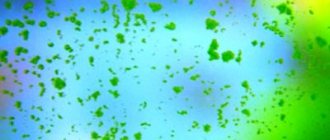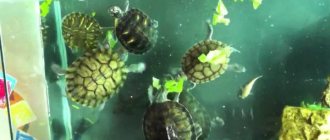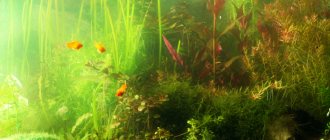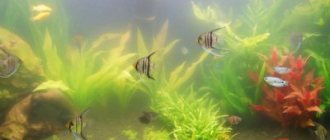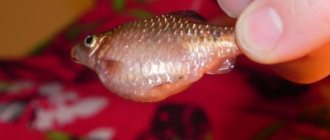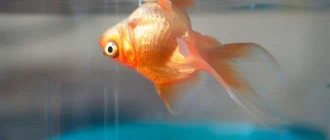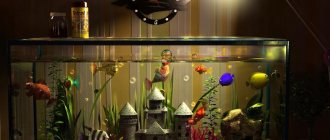Sometimes owners of artificial ponds with fish are faced with the phenomenon of foam on the surface of the water. The reasons for the formation of a foamy film on the surface of the aquarium can be different: poor maintenance of the tank, water changes, external factors, etc. If foam appears in the aquarium, this indicates hidden problems in the tank, which can cause a lot of trouble. Before getting rid of bubbles on the surface of the water surface, you should find out the answer to the question of why the water in the aquarium foams.
Possible reasons
Water in an aquarium often foams due to improper care of the container. This problem is accompanied by an unpleasant odor and cloudy water. The following are possible reasons for this problem.
Incorrectly chosen decorations
Foam can appear as a result of incorrectly selected decorations for the aquarium. Items that contain dyes may cause bubbles. Most often, if the decorations are to blame for the problem, the water becomes cloudy and may turn an unnatural color. Foam collects on the surface of the water, as well as at the location of the decoration.
No filter
Foam on the surface of the water may appear as a result of the lack of filters. This problem can also be caused by filters that are clogged and do not clean the liquid properly. Leftover food and dead fish cause the liquid to bubble. Often an unpleasant musty smell appears in the aquarium.
Use of chemicals
When cleaning an aquarium with special chemicals, a reaction occurs, which may result in foam. Some medications have the same effect.
Seaweed
Foam in the aquarium may appear as algae rot. During the process of decay, plants release ammonia, which leads to the fermentation process. Foamy accumulations and a specific odor appear on the surface.
Rare water change
It is necessary to change the water in the aquarium regularly; the health of the fish depends on it. However, in the absence of such procedures, the water begins to ferment and become cloudy. The first symptom of such a problem is small areas of foam near the walls.
Frequent water changes
Beneficial microorganisms are formed in the aquarium, which act as liquid cleaners. Changing water too frequently leads to the death of microorganisms. As a result, the water becomes polluted and begins to become cloudy. Gray foam forms on the surface.
Cheap food
Low-quality feed contains additives that do not dissolve in water and lead to its contamination. Excessive amounts of feed also have a negative impact on water quality. The fish consume the required amount of food, the remaining particles settle to the bottom and begin to ferment. When there is a large accumulation of food, the water becomes cloudy and foamy.
Congestion of aquatic life
It is necessary to populate the aquarium depending on the volume of the tank. The fish should move freely around the vessel. An excessive number of fish leads to problems during the care process. Often the aquarium owner does not have time to notice dead fish, which decompose and pollute the water. An aquarium with fish must be checked regularly and, if necessary, the inhabitants must be moved to other vessels.
Poor quality water
The reason for the appearance of foam may be an incorrectly selected liquid. For fish, you should use special water, which is updated regularly. If you use tap water, it can ferment and lead to the death of all aquatic life.
Reasons for the appearance of foam in a new aquarium
It happens that after starting the aquarium, turbidity appears in it and the water bubbles. This is normal, this is how it should be. Such manifestations do not at all mean that the water is of poor quality. During this period, the ratio of beneficial and harmful bacteria equalizes: the number of nitrifying organisms gradually decreases. Before introducing pets into a new aquarium, you need to wait until the biobalance is established. Once the water has stood sufficiently, the foam will disappear without a trace.
How to fix the problem
Once it has been determined what causes the foam, immediate action must be taken. The most common ways to solve the problem include:
- inspect the scenery and remove all objects that stain the water. The appearance of foam formations occurs as a result of the lack of pre-treatment of objects. Driftwood and other decorations must be washed with running water and treated with an antiseptic;
- check the condition of the filters. Remove dirt and rinse all tubes with water;
- Before using any chemical, it is necessary to test it in a small amount of water. If such a substance has already been used, it is necessary to partially refresh the water;
- resettle the fish. For small aquatic inhabitants, you must adhere to the rule for 5 liters of 1 small fish. For large fish, at least 10 liters per individual is required;
- installation of an additional aeration system. You can purchase such a device at any specialized store;
- soil that is contaminated must be removed from the container and treated with boiling water. This will eliminate all harmful microorganisms and chemical residues. The nutrient layer must be used new;
- Water renewal should be carried out no more than once a week;
- If foam formations appear, it is necessary to reduce the amount of feed used and clean the container. Often leftover food and dead fish accumulate among the decorations.
Aquarists also recommend using high-quality filters to purify water. Select a device depending on the volume of liquid, otherwise the filter will not be able to cope with the tasks.
Water filtration clarifiers
To cope with foam formations in aquarium water, water clarifiers are used. Pet stores and specialized veterinary pharmacies sell chemical components and compositions that are used to clean liquids.
To completely eliminate this problem, more than just water-based clarifiers are required. Tanks with fish must be equipped with filtration units, aerators, and pumps. Don't neglect changing the water.
Dealing with foam formations on the surface of the water is not difficult. There are many effective means, devices and components for this. But they must be used carefully to avoid problems and complications.
Video about the reasons for the formation of foam in an aquarium and cleaning the filter
AdminAuthor of the article
Did you like the article?
Share with your friends:
Salt water foams
Salt water is used for some varieties of fish. If foam begins to appear, shells and corals should be removed from the container. The accumulation of such decorative items leads to an increase in pH levels. This may cause foamy accumulations. Also, under the influence of salt, some decorative ornaments begin to lose their color. The paint that covers the surface mixes with water and causes it to ferment. Before purchasing decorations, it is necessary to clarify information about the effects of salt water on the item.
How to make crystal clear water in an aquarium?
To make the water in an aquarium crystal clear, like in a public or store fish tank, you need to achieve a certain level of transparency in different ways. Very clean, almost blue water is a liquid without turbidity, dirt or harmful impurities. In such an environment, any decorative pet will feel safe, demonstrating health and beautiful appearance. A new aquarium or an old one – it doesn’t matter, it’s better to wash it thoroughly and clean the water. There are conditions, the maintenance of which will make aquarium water crystal clear.
Decorations and foam
The introduction of decorative elements that have not passed the test is not recommended. Some parts dissolve in liquid over time and release harmful substances. They contribute to the appearance of foam formations. In order to prevent the death of fauna representatives, these elements are removed from the liquid. It is advisable to perform a complete water change.
Experienced aquarists purchase decorative parts for the tank only in specialized stores. To check the caves, snags and rocks are washed under running water. If they change texture or shade, then placing them in a container is prohibited. After all, they will have a detrimental effect on the condition of shellfish and fish.
What else can happen to water?
Many beginners and even experienced fish breeders experience the appearance of bubbles. The reasons for this phenomenon depend on whether your glass aquarium is new or old.
If it is new, then the bubbles appear due to substances that have not yet had time to dissipate - these are nitrates, ammonia, etc. In this case, you just have to wait for these components to naturally disappear. If the tank is old, then the appearance of bubbles is a consequence of insufficient care, low-quality snags and food. You also need to check the filter for functionality.
Some breeders complain about the appearance of a film on the surface. It appears for the following reasons:
- Use of feed with high fat content.
- Insufficient mixing of water.
- There are a lot of small algae inside.
This problem is one of a series of those that are easier to prevent than to deal with. Monitor the quality of food (it is better to choose granulated food), driftwood and other decorations. If the film has already appeared, then ampularia snails can help. If there is no result, it is better to contact a specialized company that will determine the exact cause of the problem and help eliminate it.
What does the appearance of the foam indicate?
Clean water, foamed by various devices, quickly returns to its original appearance with a smooth transparent surface. Water quality problems can be suspected if the foam:
- has a dark, dirty color with various small inclusions;
- dense consistency;
- stable and does not dissipate for a long time;
- spreads over the entire surface of the reservoir.
It is important to know that even in the absence of external signs of imbalance in the pond, unusual foam is a sure sign of the need to examine the water and the serviceability of the treatment equipment.
Filters that help purify water
There are so-called “living” and “non-living” filters that help clean water from contaminants and make it look beautiful. For aquariums, mechanical filters with a cassette and sponge are installed. However, when you find yourself in a store where fish are sold, you notice that they are swimming in an ordinary container with no filter. It turns out that you can maintain perfect cleanliness without mechanical devices; sometimes their constant use is harmful. If the aquarium does not have such a filter, it means that it has a biological filter.
A biological, that is, living filter is plants that are planted in a lighted place. Ciliates and microworms that feed on bacteria develop well in them. The thickets also trap dirt and cloudiness in the aquarium with their stems and leaves.
Excellent “filters” are bottom fish (catfish) and snails that eat carrion. Based on observations, the coil snail is capable of making water absolutely clean in a matter of days. This is probably the most affordable “filter” for a water tank. Just be careful - some species of fish and amphibians are not averse to eating it.
Another representative of the underwater world that can cleanse the environment in an aquarium are bivalve mollusks. The pea and pearlfish love warm water, and the toothless and barley love cold water. Unfortunately, like snails, these mollusks can be eaten, so before introducing them into the tank for “cleaning”, it is better to evict the rest of the pets from it. Also, toothless and pearl barley larvae parasitize fish. Most likely, after cleaning the reservoir, the aquarium will have to be quarantined.
The clawed frog is a vertebrate amphibian that will bring the aquarium to transparency. She can constantly live in a nursery with small fish, at the same time helping the water to renew itself. The frog always lives in water, but if it brings fry - and there are a lot of them, the aquarium “jungle” will have no peace. Carefully monitor the water parameters in the aquarium: regularly update the water, plant the right plants, place “orderlies” in it, then it will acquire a wonderful appearance and a healthy balance.
Medicines and chemicals are another important factor
These products can react with organic matter, creating a foamy “cloud”. It can be used to identify the roots of the problem. To get rid of negative effects, you need to:
- Minimize the amount of medications and chemical fertilizers.
- Use a mechanical filter, aerator or pump. In order to prevent the appearance of excessive foam, it is worth initially conducting experiments with the preparations in a separate vessel with water, so that in the future it will be possible to predict approximate scenarios for the development of events. Also, before using the products, you should carefully study the instructions to avoid negative consequences.
Video
Fish diseases in RAS
Master class: Health of fish in the aquarium.
Legs mirror the liver - 9 signs of relationship
(2018) Ivanov A.S. — Surface plasmon resonance technology...
The secret of clean residential water
Many novice aquarists make the mistake when, after the first days of starting a pond, they begin to worry about the formation of turbidity and foam in it. These were bacteria that entered the aquatic environment from the air. Then the owners of the aquarium begin to change the water and do other procedures with it. It is better to wait 5-6 days and the cloudiness will disappear. Otherwise, there is really something wrong with the water.
Having been patient and waiting 6 days, you will find clear and slightly yellowish water in the tank, which in professional circles is called “residential”: ciliates and organic substances have appeared in it, but there are almost no bacteria, the ciliates have neutralized them.
Such water is the key to health in the aquarium; it can not be completely changed for several years. If this water is renewed by more than half, bacteria will appear in it, causing cloudiness.
How to get rid of foam
To eliminate foam formations forever, you should follow a few simple steps.
- Remove foam from the surface of the water using a net or net. In this case, it is advisable to immediately place it in a container (container or garbage bag), and not leave it near the pool, since the foam can harm the grass
- It is necessary to correctly select antibacterial agents that do not contain substances that contribute to the formation of foam.
- It is necessary to carefully examine the pool itself and all the hoses that are connected to it. If bubbles come from the hose, it is damaged and should be repaired or purchased a new one.
- Use special products for cleaning and disinfecting water, but only those that are specifically designed for the pool. They contain enzymes that will eliminate substances in water that cause foam. The main thing is to carefully read the instructions and description of the product, since they all work in different ways.
If all of the above points are performed correctly, the level of foaming will decrease significantly.
Note
Measuring the nitrogen content of water requires specialized (and quite expensive) equipment, but a simple finger test can be used to determine whether the water is oversaturated with gas. This test is as follows: if numerous bubbles form on a dry finger immersed in the aquarium for about one minute, then there is a problem of oversaturation in the aquarium. This test can also be used to test newly filled tap water before adding it to the aquarium.

